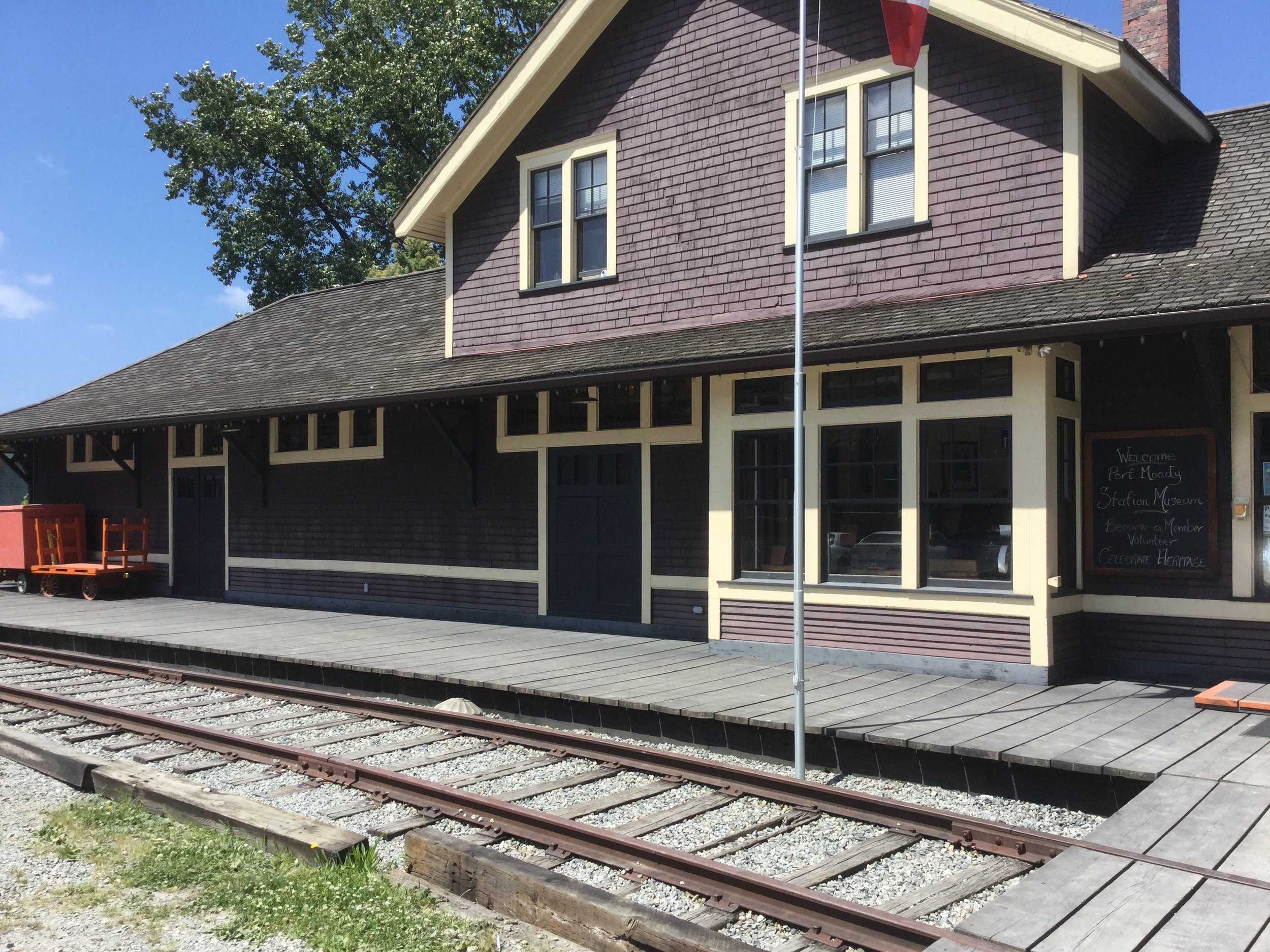
Port Moody Train Station
Experience the History of Port Moody
The building that you see before you was the second station that was built in Port Moody. Considering that buildings are supposed to be stationary, this building has already travelled to two other spots within Port Moody. In 1945, the Canadian Pacific Railway (CPR) decided that they wanted to the station to be closer to town.
So, their employees cut it in two, placed it on greased railway tracks, and used an engine to pull it to the second location on Queen Street. After the CPR discontinued their passenger service in 1976, the station shut down and was closed. Port Moody Heritage Society, who already owned and operated a museum on Kyle St, bought the station and moved it to its current location.
The first room that you will enter when you come visit the POMO Museum is the Waiting Room. The Waiting Room is set up to resemble what waiting for a train would have looked like (the benches may even have been from the Vancouver station). Walking into the next room, you have the Telegraph Room. This room is where the station master would have sold tickets and send and receive messages. The next room over is the Mail Room where they would have received and sorted the mail. Here, you will see exhibits on the fur trade, the Salish artifacts, the Royal Engineers, and the CPR. As this was a live-in station, the station master and his family would have lived here full time. The Kitchen and the Parlour are set up in a 1930s style. Lastly, the large room is the Freight Room. It showcases our jail cell and exhibits about Port Moody’s Industry history.
There is a basement that was added when the station was moved to its current location. Today, it is used as our museum’s collection storage area.
Overview
Museum operations are overseen by the PMHS and its volunteer Board of Directors. A full-time Executive Director, Manager/Curator and Program/Volunteer Coordinator operate the Museum on a daily basis. Student assistants add support over the summer months and on weekends throughout the year. Volunteers provide support to all operations including maintenance, collection maintenance, garden maintenance, display development, and event delivery.
Admission by donation
Suggested donation $5 per person.


